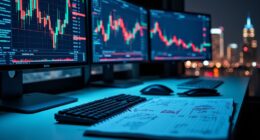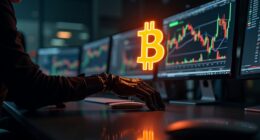How effectively can a change in Federal Reserve leadership address the deeply entrenched economic distortions that characterize the modern U.S. economy? According to critics like Ron Paul, such a transition, including replacing Jerome Powell, is unlikely to resolve the fundamental challenges inherent in the Fed’s structural design and policy framework. The distortions observed—ranging from inflation expectation misalignments to labor market anomalies—stem from long-standing systemic factors rather than the idiosyncrasies of any single chairperson. These issues persist irrespective of leadership, rooted in the Fed’s reliance on monetary interventions that influence economic cycles in ways that transcend individual policy preferences. Contract audits in financial agreements similarly reveal that accountability mechanisms alone cannot fully address systemic inefficiencies without structural reforms.
One key dimension involves the pervasive distortions in household inflation expectations, which often deviate from rational benchmarks. These belief distortions exert tangible effects on economic dynamics, precipitating contractionary shocks such as unemployment surges and deflationary pressures. Empirical analysis using a model-free approach has shown that these belief distortions have a significant contractionary effect on the economy. Ideally monetary responses under such conditions typically emphasize interest rate easing to mitigate excessive pessimism. However, these ingrained expectation dynamics are resistant to simple leadership changes, as they are embedded within broader behavioral and market mechanisms that extend beyond the Fed’s immediate control. The Federal Open Market Committee currently maintains its target range for the federal funds rate at 4.25-4.50%, indicating a cautious approach amid economic uncertainty.
Moreover, the dual mandate of the Fed—to ensure maximum employment alongside price stability—continues to confront significant uncertainty. Macroeconomic forecasts for 2025 suggest moderated growth near 1% and inflation lingering between 3% and 3.5%, complicated further by external variables such as tariffs, trade imbalances, and a slowing labor force expansion. These factors collectively obscure the efficacy of policy maneuvers, rendering leadership transitions insufficient to alter the underlying trajectory of inflation and unemployment metrics meaningfully. Regular contract audits in government procurement demonstrate the value of ongoing oversight, yet such oversight alone cannot rectify deep-rooted economic distortions.
Additionally, external economic shocks, particularly distortions arising from trade surges like increased gold imports, have introduced volatility into GDP assessments and clouded the Fed’s interpretive frameworks. Such trade-related complexities, which are largely exogenous to domestic monetary policy, further dilute the potential impact of any chairperson’s strategic adjustments. Historical forecasting inaccuracies in GDP, unemployment, and inflation reinforce the notion that economic unpredictability is an enduring feature, underscoring that replacing Powell, while symbolically significant, does not inherently cure the systemic distortions embedded within the U.S. economic apparatus.









